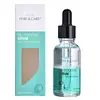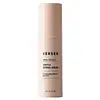What's inside
What's inside
 Key Ingredients
Key Ingredients

 Benefits
Benefits

 Concerns
Concerns

 Ingredients Side-by-side
Ingredients Side-by-side

Water
Skin ConditioningCaprylic/Capric Triglyceride
MaskingHelianthus Annuus Seed Oil
EmollientSimmondsia Chinensis Seed Oil
EmollientButyrospermum Parkii Oil
EmollientGlycerin
HumectantPropylene Glycol
HumectantSqualane
EmollientPanthenol
Skin Conditioning3-O-Ethyl Ascorbic Acid
Skin ConditioningTocopheryl Acetate
AntioxidantButylene Glycol
HumectantSaccharide Isomerate
HumectantSodium Hyaluronate
HumectantXylitylglucoside
HumectantAnhydroxylitol
HumectantHexylene Glycol
EmulsifyingPhenoxyethanol
PreservativeOlea Europaea Oil Unsaponifiables
Skin ConditioningXylitol
HumectantRubus Chamaemorus Seed Extract
Skin ConditioningPolygonum Cuspidatum Root Extract
AntioxidantHydroxyethylcellulose
Emulsion StabilisingCentella Asiatica Extract
CleansingCamellia Sinensis Leaf Extract
AntimicrobialChamomilla Recutita Flower Extract
MaskingGlycyrrhiza Glabra Root Extract
BleachingRosmarinus Officinalis Leaf Extract
AntimicrobialScutellaria Baicalensis Root Extract
AstringentCitric Acid
BufferingSodium Citrate
BufferingCI 42090
Cosmetic ColorantSodium Hydroxide
BufferingCI 19140
Cosmetic ColorantEthylhexylglycerin
Skin ConditioningCellulose Gum
Emulsion StabilisingWater, Caprylic/Capric Triglyceride, Helianthus Annuus Seed Oil, Simmondsia Chinensis Seed Oil, Butyrospermum Parkii Oil, Glycerin, Propylene Glycol, Squalane, Panthenol, 3-O-Ethyl Ascorbic Acid, Tocopheryl Acetate, Butylene Glycol, Saccharide Isomerate, Sodium Hyaluronate, Xylitylglucoside, Anhydroxylitol, Hexylene Glycol, Phenoxyethanol, Olea Europaea Oil Unsaponifiables, Xylitol, Rubus Chamaemorus Seed Extract, Polygonum Cuspidatum Root Extract, Hydroxyethylcellulose, Centella Asiatica Extract, Camellia Sinensis Leaf Extract, Chamomilla Recutita Flower Extract, Glycyrrhiza Glabra Root Extract, Rosmarinus Officinalis Leaf Extract, Scutellaria Baicalensis Root Extract, Citric Acid, Sodium Citrate, CI 42090, Sodium Hydroxide, CI 19140, Ethylhexylglycerin, Cellulose Gum
Water
Skin ConditioningHelianthus Annuus Seed Oil
EmollientAloe Barbadensis Leaf Juice
Skin ConditioningSodium Acrylate/Sodium Acryloyldimethyl Taurate Copolymer
Emulsion StabilisingSilica
AbrasiveRetinol
Skin ConditioningTocopherol
AntioxidantTocopheryl Acetate
AntioxidantBakuchiol
AntimicrobialCrithmum Maritimum Extract
Skin ConditioningChamomilla Recutita Extract
Skin ConditioningMelia Azadirachta Flower Extract
Skin ConditioningMelia Azadirachta Leaf Extract
Skin ConditioningPaeonia Lactiflora Root Extract
Skin ConditioningOpuntia Streptacantha Stem Extract
HumectantLactobacillus/Papaya Fruit Ferment Extract
AbrasiveButyrospermum Parkii Butter
Skin ConditioningRosa Canina Seed Oil
EmollientHippophae Rhamnoides Seed Oil
Skin ProtectingHydrogenated Vegetable Oil
EmollientSodium Hyaluronate
HumectantGlycerin
HumectantLecithin
EmollientCaprylyl Glycol
EmollientCaprylic/Capric Triglyceride
MaskingXylitol
HumectantAnhydroxylitol
HumectantXylitylglucoside
HumectantTrehalose
HumectantSorbitan Oleate
EmulsifyingPolysorbate 20
EmulsifyingPolysorbate 80
EmulsifyingHexylene Glycol
EmulsifyingIsohexadecane
EmollientPhenoxyethanol
PreservativeEthylhexylglycerin
Skin ConditioningSorbic Acid
PreservativePotassium Sorbate
PreservativeSodium Benzoate
MaskingLeuconostoc/Radish Root Ferment Filtrate
AntimicrobialCitric Acid
BufferingWater, Helianthus Annuus Seed Oil, Aloe Barbadensis Leaf Juice, Sodium Acrylate/Sodium Acryloyldimethyl Taurate Copolymer, Silica, Retinol, Tocopherol, Tocopheryl Acetate, Bakuchiol, Crithmum Maritimum Extract, Chamomilla Recutita Extract, Melia Azadirachta Flower Extract, Melia Azadirachta Leaf Extract, Paeonia Lactiflora Root Extract, Opuntia Streptacantha Stem Extract, Lactobacillus/Papaya Fruit Ferment Extract, Butyrospermum Parkii Butter, Rosa Canina Seed Oil, Hippophae Rhamnoides Seed Oil, Hydrogenated Vegetable Oil, Sodium Hyaluronate, Glycerin, Lecithin, Caprylyl Glycol, Caprylic/Capric Triglyceride, Xylitol, Anhydroxylitol, Xylitylglucoside, Trehalose, Sorbitan Oleate, Polysorbate 20, Polysorbate 80, Hexylene Glycol, Isohexadecane, Phenoxyethanol, Ethylhexylglycerin, Sorbic Acid, Potassium Sorbate, Sodium Benzoate, Leuconostoc/Radish Root Ferment Filtrate, Citric Acid
 Reviews
Reviews

Ingredients Explained
These ingredients are found in both products.
Ingredients higher up in an ingredient list are typically present in a larger amount.
This ingredient is created from dehydrating xylitol in acidic conditions. Xylitol is a famous sugar and humectant.
Much like its predecessor, anhydroxylitol is a humectant. Humectants attract and hold water to moisturize the skin.
This ingredient is most commonly found in a popular trio called Aquaxyl. Aquaxyl is made up of anhydroxylitol (24 - 34%), xylitylglucoside (35 - 50%), and xylitol (5 - 15%).
According to a manufacturer, Aquaxyl is known for a 3-D hydration concept and an anti-dehydration shield to reinforce the outer layer of skin.
This ingredient is often derived from plants such as wood and sugarcane.
Learn more about AnhydroxylitolThis ingredient is an emollient, solvent, and texture enhancer. It is considered a skin-softener by helping the skin prevent moisture loss.
It helps thicken a product's formula and makes it easier to spread by dissolving clumping compounds.
Caprylic Triglyceride is made by combining glycerin with coconut oil, forming a clear liquid.
While there is an assumption Caprylic Triglyceride can clog pores due to it being derived from coconut oil, there is no research supporting this.
Learn more about Caprylic/Capric TriglycerideCitric Acid is an alpha hydroxy acid (AHA) naturally found in citrus fruits like oranges, lemons, and limes.
Like other AHAs, citric acid can exfoliate skin by breaking down the bonds that hold dead skin cells together. This helps reveal smoother and brighter skin underneath.
However, this exfoliating effect only happens at high concentrations (20%) which can be hard to find in cosmetic products.
Due to this, citric acid is usually included in small amounts as a pH adjuster. This helps keep products slightly more acidic and compatible with skin's natural pH.
In skincare formulas, citric acid can:
While it can provide some skin benefits, research shows lactic acid and glycolic acid are generally more effective and less irritating exfoliants.
Most citric acid used in skincare today is made by fermenting sugars (usually from molasses). This synthetic version is identical to the natural citrus form but easier to stabilize and use in formulations.
Read more about some other popular AHA's here:
Learn more about Citric AcidEthylhexylglycerin (we can't pronounce this either) is commonly used as a preservative and skin softener. It is derived from glyceryl.
You might see Ethylhexylglycerin often paired with other preservatives such as phenoxyethanol. Ethylhexylglycerin has been found to increase the effectiveness of these other preservatives.
Glycerin is already naturally found in your skin. It helps moisturize and protect your skin.
A study from 2016 found glycerin to be more effective as a humectant than AHAs and hyaluronic acid.
As a humectant, it helps the skin stay hydrated by pulling moisture to your skin. The low molecular weight of glycerin allows it to pull moisture into the deeper layers of your skin.
Hydrated skin improves your skin barrier; Your skin barrier helps protect against irritants and bacteria.
Glycerin has also been found to have antimicrobial and antiviral properties. Due to these properties, glycerin is often used in wound and burn treatments.
In cosmetics, glycerin is usually derived from plants such as soybean or palm. However, it can also be sourced from animals, such as tallow or animal fat.
This ingredient is organic, colorless, odorless, and non-toxic.
Glycerin is the name for this ingredient in American English. British English uses Glycerol/Glycerine.
Learn more about GlycerinHelianthus Annuus Seed Oil is the oil derived from the seeds of a Sunflower. Sunflower seed oil is non-fragrant. It is an emollient, meaning it helps to soften the skin.
Sunflower seed oil contains many fatty acids. The fatty acids found in sunflower seeds include (from highest amount to least): linoleic acid, myristic acid, palmitic acid, stearic acid, arachidic acid, oleic acid, and linolenic acid.
These fatty acids help the skin create ceramides. Ceramides play a role in repairing the skin barrier.
Helianthus Annuus Seed Oil helps moisturize the skin. This in turn helps the skin look more rejuvenated and smoother.
Sunflowers are rich in vitamin E.
Historians believe Indigenous cultures of North America domesticated sunflowers before corn. Thus they relied on sunflower oil for a variety of uses. One such use is moisturizing skin and hair.
Sunflower seed oil may not be fungal acne safe. We recommend speaking with a professional if you have any concerns.
Learn more about Helianthus Annuus Seed OilHexylene Glycol is a surfactant. Glycols are a class of alcohols. Hexylene Glycol is a surfactant and emulsifier.
As a surfactant, Hexylene Glycol helps gather dirt and oil on your skin to be washed away.
As an emulsifier, Hexylene Glycol helps keep water and oil together. This prevents them from separating in a product. Hexylene Glycol also thins out the texture of a product by lessening viscosity.
Hexylene Glycol has a small molecular weight.
Learn more about Hexylene GlycolPhenoxyethanol is a preservative that has germicide, antimicrobial, and aromatic properties. Studies show that phenoxyethanol can prevent microbial growth. By itself, it has a scent that is similar to that of a rose.
It's often used in formulations along with Caprylyl Glycol to preserve the shelf life of products.
Sodium Hyaluronate is hyaluronic acid's salt form. It is commonly derived from the sodium salt of hyaluronic acid.
Like hyaluronic acid, it is great at holding water and acts as a humectant. This makes it a great skin hydrating ingredient.
Sodium Hyaluronate is naturally occurring in our bodies and is mostly found in eye fluid and joints.
These are some other common types of Hyaluronic Acid:
Learn more about Sodium HyaluronateTocopheryl Acetate is AKA Vitamin E. It is an antioxidant and protects your skin from free radicals. Free radicals damage the skin by breaking down collagen.
One study found using Tocopheryl Acetate with Vitamin C decreased the number of sunburned cells.
Tocopheryl Acetate is commonly found in both skincare and dietary supplements.
Learn more about Tocopheryl AcetateWater. It's the most common cosmetic ingredient of all. You'll usually see it at the top of ingredient lists, meaning that it makes up the largest part of the product.
So why is it so popular? Water most often acts as a solvent - this means that it helps dissolve other ingredients into the formulation.
You'll also recognize water as that liquid we all need to stay alive. If you see this, drink a glass of water. Stay hydrated!
Learn more about WaterXylitol is a humectant and prebiotic. It can help with dry skin.
In studies, xylitol has been shown to improve dry skin. It decreased transepidermal water loss, or when water passes through the skin and evaporates. Xylitol also showed to help improve the biomechanical properties of the skin barrier.
The prebiotic property of xylitol may also help reinforce our skin's natural microbiome. Having a healthy microbiome prevents infection by bad bacteria and helps with hydration.
As a humectant, Xylitol helps draw moisture from both the air and from deeper skin layers. This helps keep skin hydrated.
Xylitol is a sugar alcohol and commonly used as a sugar substitute. It is naturally occurring in plants such as strawberries and pumpkin.
Learn more about XylitolXylitylglucoside is created from xylitol and glucose, two humectants.
Not surprisingly, this ingredient is also a humectant. It attracts and holds water in your skin, helping to maintain hydration.
This ingredient is most commonly found in a popular trio called Aquaxyl. Aquaxyl is made up of anhydroxylitol(24 - 34%), xylitylglucoside (35 - 50%), and xylitol (5 - 15%).
According to a manufacturer, Aquaxyl is known for a 3-D hydration concept and an anti-dehydration shield to reinforce the outer layer of skin.
Learn more about Xylitylglucoside